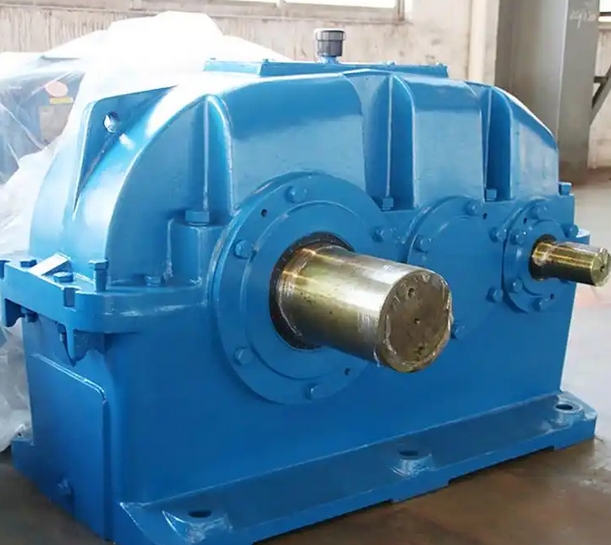How to optimize the heat treatment effect of ZLY125-12.5-1 gear reducer
To optimize the heat treatment effect of ZLY125-12.5-1 gear reducer, we can start from the following aspects:
Material selection and control
Selecting appropriate steel: Steel mills are required to provide "low and stable deformation" steel, control the hardenability zone of the steel to be as narrow as possible, to ensure stable deformation during heat treatment. Meanwhile, controlling the Al/N ratio within the range of 1-2.5 can narrow the hardenability band and reduce deformation.

Control material defects: Avoid defects such as box segregation and strip structure in the material, which can cause uneven deformation of gear spline holes and uneven carburizing, affecting the heat treatment effect.
Optimization of preparatory heat treatment
Adopting appropriate normalizing process: Excessive normalizing hardness, mixed crystals, and a large amount of martensite or Weibull structure will increase the deformation of the inner hole. Therefore, temperature controlled normalizing or isothermal annealing can be used to treat forgings to obtain uniform structure and appropriate hardness, preparing for subsequent heat treatment.
Optimization of carburizing process
Control the carburizing temperature and time: for example, control the heating temperature of the carburizing furnace at 920-935 ℃ and maintain it for 25-35 minutes, then perform segmented carburizing. In the first stage of high carbon potential strong carburizing, the carbon potential is controlled at 1.2 ± 0.04c% and the carburizing time is 5-7 hours; in the second stage of low carbon potential diffusion, the carbon potential is controlled at 0.85 ± 0.04c% and the carburizing time is 11-12 hours. This can refine the grain size and uniform metallographic structure of the gear forging blank, and reduce deformation.
Precise control of carburizing agent flow rate: Depending on the different stages of carburizing, the drip acceleration and injection speed of the first and second carburizing agents are precisely controlled. For example, in the first stage, the drip acceleration of the first carburizing agent is controlled at 42-48ml/min, the injection speed of the second carburizing agent is 6-8l/min, and the control speed is maintained at 420-440min to ensure the uniformity of the carbon layer.
Optimization of Quenching Process
Choosing the appropriate quenching medium and temperature: Hot oil quenching has less deformation than cold oil quenching, and the oil temperature can generally be controlled at 100 ℃± 12 ℃. At the same time, suitable quenching media should be selected according to the gear material, such as polymer aqueous solution for low carbon steel gears and rapid quenching oil for high carbon steel gears.
Optimize quenching clamping method: Disk parts are perpendicular to the oil surface, shaft parts are installed vertically, using compensating washers, support washers, stacked washers, etc. Spline hole parts can use carburizing spindles, etc., to evenly heat and cool the workpiece, reduce deformation caused by thermal stress and uneven tissue stress.
Adjusting the parameters of the quenching press: For the disc-shaped gears quenched by the upper quenching press, the pressure of the inner and outer molds and expansion blocks of the quenching press, as well as the size of the fuel injection in each section and the worktable, can be adjusted according to the deformation of the gears to control the deformation.
Fate.

